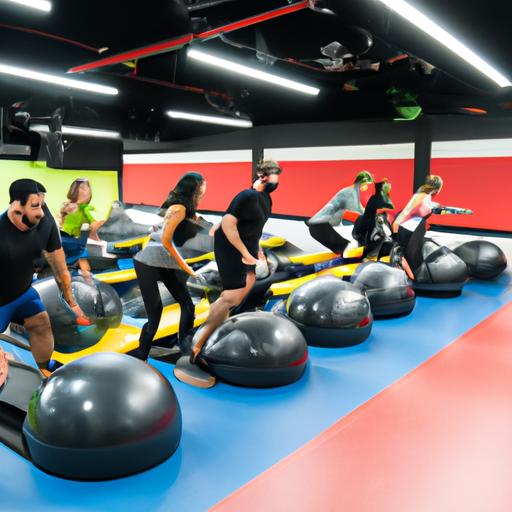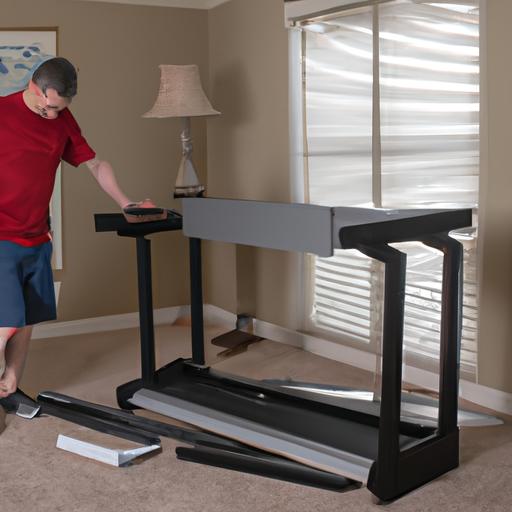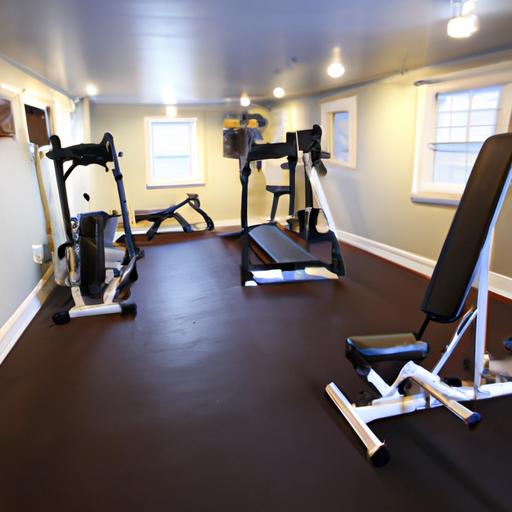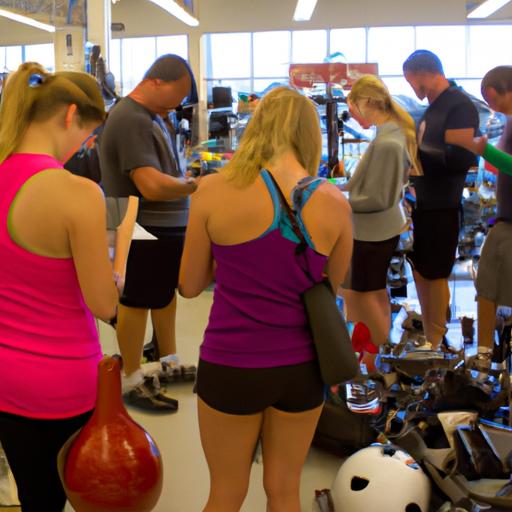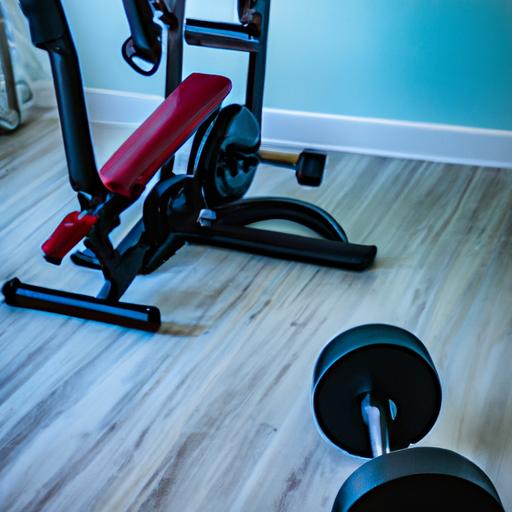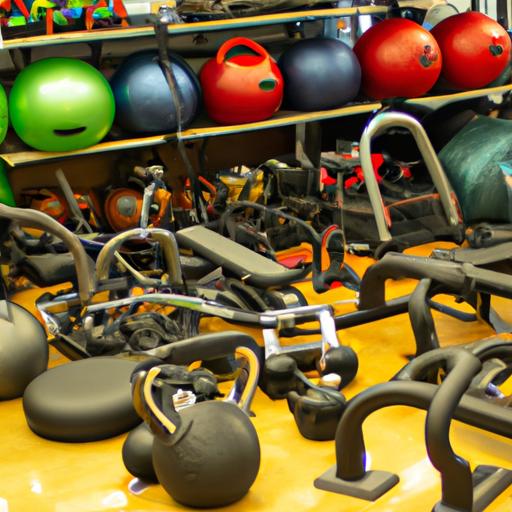Unveiling the Power of Concepts in Fitness Equipment
Introduction to Concepts in Fitness Equipment
Welcome, fitness enthusiasts! Have you ever wondered how fitness equipment plays a crucial role in helping you achieve your fitness goals? Today, we delve into the world of concepts in fitness equipment and uncover their significance in your fitness journey.
A. Importance of fitness equipment in achieving fitness goals
Fitness equipment serves as the cornerstone of any successful fitness regimen. Whether you are aiming to shed those extra pounds, build strength, or enhance endurance, the right equipment can make all the difference. By incorporating various fitness equipment into your workouts, you can optimize your training, challenge your body, and accelerate your progress.
B. Overview of various concepts in fitness equipment
When it comes to fitness equipment, there exists a wide array of concepts tailored to cater to different fitness needs. From cardiovascular equipment like treadmills, exercise bikes, and elliptical trainers to strength training equipment like free weights, weight machines, and resistance bands, each concept offers unique benefits and functionalities. Additionally, functional training equipment such as suspension trainers, medicine balls, and battle ropes focus on enhancing overall body strength, stability, and coordination.
C. Significance of understanding these concepts for effective workouts
Understanding the concepts behind fitness equipment is crucial for maximizing the effectiveness of your workouts. By familiarizing yourself with the different types of equipment and their functionalities, you can create a well-rounded exercise routine that targets specific muscle groups, improves cardiovascular health, and promotes overall fitness. Moreover, knowing how to utilize these concepts properly allows you to tailor your workouts according to your fitness goals, ensuring optimal results.
Embark on this fitness equipment journey with me as we explore the key features, factors to consider, maintenance tips, and latest innovations in the realm of fitness equipment. Get ready to revolutionize your workouts and unleash your full potential!
Stay tuned for the next section where we delve deeper into the types of fitness equipment available and their incredible benefits.
Factors to Consider when Choosing Fitness Equipment
When it comes to selecting the right fitness equipment, several factors need to be taken into account. By considering these factors, you can ensure that the equipment you choose aligns perfectly with your fitness goals and provides a seamless workout experience. Let’s dive into the key considerations for choosing fitness equipment.
A. Fitness Goals and Objectives
First and foremost, it is crucial to identify your fitness goals and objectives. Are you aiming to build strength, improve cardiovascular endurance, lose weight, or enhance overall fitness? Understanding your specific goals will help you narrow down the types of equipment that will be most effective in supporting your fitness journey.
B. Available Space and Budget
Consider the space available in your home or gym. Some fitness equipment, such as treadmills or weight machines, require a dedicated area. Evaluate the dimensions and layout to ensure that the equipment fits comfortably in your space. Additionally, establish a budget that aligns with your financial capabilities. Fitness equipment comes in a wide range of prices, so determine your budget beforehand to make an informed decision.
C. User’s Fitness Level and Experience
Take into account your current fitness level and experience. Beginners may benefit from versatile and user-friendly equipment, while advanced users might require more complex and challenging options. Consider equipment that offers adjustable resistance or intensity levels to accommodate various fitness levels and allow for progression.
D. Durability and Quality of the Equipment
Investing in durable and high-quality fitness equipment is crucial for long-term use. Check for sturdy construction, robust materials, and reliable mechanisms. Look for trusted brands with positive reviews and warranties to ensure the durability and lifespan of the equipment.
E. User Reviews and Recommendations
Before making a final decision, take the time to research user reviews and recommendations. These firsthand experiences can provide insights into the performance, functionality, and overall satisfaction of different fitness equipment. Consider feedback from individuals with similar fitness goals and preferences to make an informed choice.
By considering these factors, you can confidently select fitness equipment that aligns with your goals, fits your space and budget, caters to your fitness level, and guarantees durability and quality. Stay tuned for the next section, where we explore maintenance tips to ensure the longevity and optimal performance of your fitness equipment.
Maintenance and Proper Use of Fitness Equipment
To ensure the longevity and optimal performance of your fitness equipment, proper maintenance and usage are essential. Let’s explore the key practices that will keep your equipment in top shape and help you exercise safely.
A. Regular Cleaning and Sanitizing
Regularly cleaning your fitness equipment not only keeps it looking pristine but also helps maintain hygiene. Wipe down surfaces with a mild disinfectant to remove sweat, dirt, and bacteria. Pay close attention to handles, seats, and touchscreens, as these areas often harbor germs. By incorporating this simple cleaning routine into your fitness regimen, you can protect yourself and others from potential infections.
B. Lubrication and Maintenance of Moving Parts
Moving parts of fitness equipment, such as treadmills, elliptical trainers, or weight machines, require proper lubrication to function smoothly. Refer to the manufacturer’s instructions to identify the recommended lubricant and frequency of application. Regularly check for any loose or worn-out parts and tighten or replace them as needed. By attending to these maintenance tasks, you can preserve the durability and performance of your equipment.
C. Proper Storage and Handling
When not in use, it is crucial to store your fitness equipment properly. Keep them in a clean, dry, and well-ventilated space to prevent moisture buildup or damage. If your equipment is foldable or compact, take advantage of this feature to save space. Additionally, avoid placing heavy objects on top of delicate equipment to prevent any potential damage.
D. Safety Guidelines and Instructions
Before using any fitness equipment, familiarize yourself with the safety guidelines and instructions provided by the manufacturer. Pay attention to weight limits, recommended usage techniques, and safety precautions. Proper form and technique are crucial for preventing injuries during workouts. If you are unsure about how to use a specific piece of equipment, consider seeking guidance from a fitness professional.
E. Regular Equipment Inspection and Repair
Periodically inspect your fitness equipment for any signs of wear and tear. Check cables, belts, or resistance bands for fraying or damage. If you notice any issues, contact the manufacturer or a professional technician for repairs. By addressing these concerns promptly, you can prevent accidents and ensure the equipment remains in optimal condition.
By incorporating these maintenance and usage practices into your fitness routine, you can extend the lifespan of your equipment, enhance your safety, and enjoy uninterrupted workouts. Stay tuned to explore the exciting world of the latest innovations and trends in fitness equipment in the upcoming section!
Factors to Consider when Choosing Fitness Equipment
Selecting the right fitness equipment is pivotal to ensure a rewarding and effective workout experience. To make an informed decision, consider the following factors:
A. Fitness Goals and Objectives
Before purchasing any fitness equipment, it’s essential to define your fitness goals. Are you aiming to lose weight, build muscle, improve cardiovascular endurance, or enhance overall fitness? Understanding your objectives will guide you in choosing equipment that aligns with your specific needs.
B. Available Space and Budget
Evaluate the space you have available for your fitness equipment. Consider the dimensions and weight of the equipment to ensure it fits comfortably in your designated workout area. Additionally, establish a budget that allows for high-quality equipment without straining your finances.
C. User’s Fitness Level and Experience
Take into account your fitness level and experience when selecting equipment. Beginners may benefit from versatile equipment that offers various intensity levels, while advanced individuals may require specific equipment to target their unique training requirements.
D. Durability and Quality of the Equipment
Investing in durable and high-quality fitness equipment ensures longevity and optimal performance. Read customer reviews, research reputable brands, and consider warranties to make an informed decision about the equipment’s durability and reliability.
E. User Reviews and Recommendations
Tap into the power of user reviews and recommendations. Discover what other fitness enthusiasts have to say about the equipment you are considering. Their insights can provide valuable information about the equipment’s functionality, durability, and overall performance.
By carefully considering these factors, you can select fitness equipment that aligns with your goals, fits your space and budget, caters to your fitness level, and meets your quality expectations. Remember, choosing the right equipment sets the foundation for a successful fitness journey.
In the next section, we will explore essential maintenance practices and proper usage guidelines to ensure the longevity and safety of your fitness equipment. Let’s dive in!
